Finance Assignment: Research On Financial Market & Capital Budgeting Analysis
Question
Task:
Finance Assignment Tasks
This assignment task is a written report that include 3 parts: Part 1 is a research and fact finding on Australian financial market. Part 2 is a fact finding of financial market regulation in Australia and Part 3 is a risk analysis and project evaluation. To complete the assignment, groups are recommended to obtain data and information from relevant web sites, especially websites of Australia Stock Exchange: www.asx.com.au; Australian Securities and Investment Commission: https://asic.gov.au/ and the Australian Prudential Regulation Authority (APRA) https://www.apra.gov.au for their research and fact finding.
Part 1. Research and fact finding of Australian financial market
1.1 Comparison of four key financial institutions: commercial banks, insurance companies, investment banks and investment funds in Australia from the perspective of a potential investor who would like to invest into the institutions
Criteria for comparison include: (1) classification (the group of financial institutions it belongs to); (2) market sector of operation; (3) key business activities; and (4) main source of income. Organize your group’s comparison in a relevant table. Your group’s research should be supported by a fact finding of real life examples of a commercial bank, insurance company, and investment bank and investment fund in Australia. Your group’s discussion on each example should reflect the above mentioned criteria and the following information: (i) what is the code of stock listed, (ii) when was the company’s stock was first listed, (iii) what is the current market capitalization of that stock, (iv) the current total share outstanding, (v) who is the chairman and who is the CEO of that company, (vi) a graph of five year dividend payment for each company and (vii) next dividend date. Using ASX and ASIC websites for the fact finding.
1.2 Analysis of three financial management questions: (i) capital budgeting, (ii) capital structure and (ii) working capital management
Define the three financial management questions and justify your group’s analysis by illustrating examples: Choose one or more events described by media (CNN Business, Financial Times, Dow Jones financial news etc.) about a company who is doing one or more activities related to the three financial management questions. Analyse that event (s) applying the three financial management questions. Note: Each question is to be illustrated by at least one event.
Part 2. Fact Finding of Australian financial market regulation
2.1 Fact finding of the listing on ASX
Assuming your group is working for a company that is considering to be listed on ASX in the near future. Go to the website of Australian Stock Exchange (ASX), do a fact finding and present an analysis of Australian Stock Exchange Listing Requirements and process. The following questions should be addressed:
(1) What are the advantages of being a listed company on ASX
(2) What are the problems that need to be taken in consideration for being listed company on ASX
(3) What are the requirements for listing on ASX
(4) What are the steps of listing procedures on ASX
(5) How listing fee is applied. Using ASX listing fee calculator to identify your selected company listing fee, choosing any random number for the ranges of market cap: 10 million -50 million; 50 million-100 million; 100 million-500 million.
2.2 Fact Finding of requirements on Financial advisory service registration in Australia
Assuming after graduation you would like to work as a financial adviser. Go to the website of Australian Securities and Investment Commission, do a fact finding and present an analysis of financial advisor registration to identify whether you are qualified and what steps should be taken to be a financial adviser in Australia. The following questions should be addressed:
(1) What is the ASIC’s Financial advisers register
(2) Who should be on the Register, who are not on the Register and who updates the register
(3) What information should be on the Register
(4) What are the relevant financial products for a financial advisor
(5) What are the professional standards applied for a financial advisor.
Part 3. Risk analysis and project evaluation
Case Study: Assume that are the financial manager of a company, which is considering a potential project with a new product that is expected to sell for an average price of $22 per unit and the company expects it can sell 350 000 unit per year at this price for a period of 4 years. Launching this project will require purchase of a $2 000 000 equipment that has residual value in four years of $200 000 and adding $ 600 000 in working capital which is expected to be fully retrieved at the end of the project. Other information is available below:
Depreciation method: straight line
Variable cost per unit: $11
Cash fixed costs per year $350 000
Discount rate: 10%
Tax Rate: 30%
Do an analysis with cash flows of the project to determine the sensitivity of the project NPV with the following changes in the value drivers and provide your results in (a) relevant tables:
Unit sales decrease by 10%
Price per unit decreases by 10%
Variable cost per unit increases 10%
Cash fixed cost per year increases by 10%
Answer
Introduction
A financial market is a market place whereby the trading of securities happens. As seen in this finance assignment, the Australian financial market is a well-structured market that comprises of different products such as equity, debt, money, and foreign exchange. The ASX is the leading stock market of Australia and helps in providing different functions such as operations of market clearinghouse and facilitator of payment. The initial part of the discussion deals with the financial institution classification. For this Commercial Bank- Auswide Bank Limited, Insurance Company- AUB Group Limited, Insurance Company- AUB Group Limited and Investment Bank- Macquarie Bank Limited is selected. The study introspects upon the various parameters of the company starting from the time it was listed, the market capitalization, Chairperson, and the date of the dividend. The second part aims to provide an insight into the listing requirements, the listing fees, and the problem associated with the listing. The other subpart deals with the financial adviser register and relevant financial products that need to be listed in it. The third part of the discussion is regarding risk analysis and project assessment. As per the evaluation, it is evident that the PV is higher hence the projected should be accepted.
Part 1.Research and fact finding of Australian financial market
Part 1.1 COMPARISONS IN FOUR KEY FINANCIAL INSTITUTIONS
In this part of the report, we are comparing four different sectors of financial institutions listed on the Australian Stock Exchange to enable the potential investors to decide on investment in these institutions:
i. Commercial Bank- Auswide Bank Limited
Auswide Bank Limited is an Australian Bank that is categorised as an Authorised Deposit-taking Institution (ADI) and has been in operation for 50 years. The sector of operation is banking and financial services and the key business activities of the bank include providing loans, insurance services, investments and saving facilities, foreign exchange facilities and other banking services (Auswide Bank Limited 2020). The main source of income is the interest that it earns from various sources which include deposits in other banks or financial institutions, investment securities and other loans and advances given to customers. The code of listing on ASX for Auswide Bank Limited is ABA. The company's stock was first listed on 19.09.1994. . The current outstanding shares of the company are 42,434,716. Chairman of the company is John S Humphrey (Auswide Bank Limited 2020). The CEO of the company is Mark Rasmussen. Next dividend date of the company has not been announced as on date.
Following is the graph for 5 years annual dividend paid by the company:
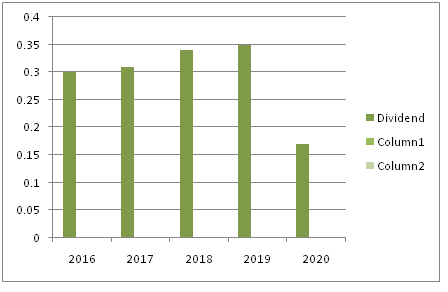
ii. Insurance Company- AUB Group Limited
AUB Group Limited is an Australian Insurance Company. The sector of operation is Insurance and the key business activities of the company include Insurance broking, Underwriting and other Risk Services. The main source of income is from commission and brokerage and other incomes include management fees, dividends, interest, etc. The code of listing on ASX for AUB Group Limited is AUB. The company’s stock was first listed in the year 2005. Current Market Cap of the stock is 995.08m (AUB Group Ltd 2020). The current outstanding shares of the company are 73,818,757. Chairman of the company is David Clarke. The CEO & Managing Director of the company is Mike Emmett. Next dividend date of the company is 03.09.2020
Following is the graph for 5 years annual dividend paid by the company:

iii. Investment Bank- Macquarie Bank Limited
Macquarie Bank Limited is an Australian Investment Bank and is the largest in its category in Australia. The sector of operation is varied and includes capital management, Assets Management and Commodities exchange (Macquarie 2020). The main sources of income are interest income and fees and commission from brokerage, portfolio administration, etc. The code of listing on ASX for AUB Group Limited is MQG. The company’s stock was first listed on 29.07.1996. Current Market Cap of the stock is 39.16bn AUD. The current outstanding shares of the company are 35,43,81,396. Chairman of the company is Mr Peter H Warne. The CEO & Managing Director of the company is Ms Mary J Reemst. Next dividend date of the company is 03.07.2020
Following is the graph for 5 years annual dividend paid by the company:
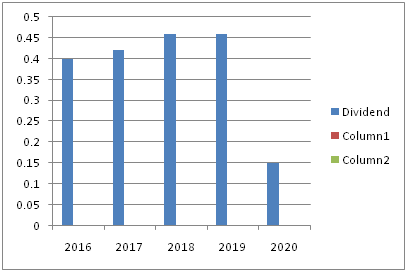
iv. Investment Funds- Acorn Capital Investment Fund Limited
Acorn Capital Investment Fund Limited is an Australian Investment Funding Company which is involved in investment funds of distinct investors in emerging Australian companies. The sector of operation is Investment funding. The main sources of income are interest income and dividend/ distribution income (Acorn Capital 2020). The code of listing of Acorn is ACQ. The company’s stock was first listed on 01.05.2014. Current Market Cap of the stock is 47.75m. The current outstanding shares of the company are 53,35,37,73. Chairman of the company is Mr John Steven. The company has 2 other directors & 2 independent directors on Board & provides no information about the CEO (Acorn Capital Investment 2020). Next dividend date of the company is not announced yet.
Following is the graph for 5 years annual dividend paid by the company:
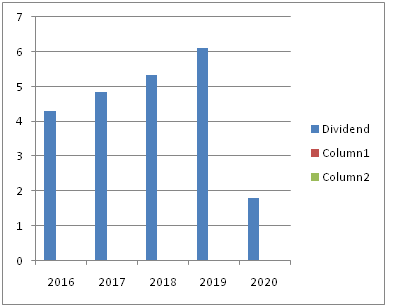
Part 1.2
Financial Management Techniques are defined as under:
Capital Budgeting-
This is a management tool which helps in decision making on whether to go for a decision or not. It uses benefits compared with the outflow of cash flows to arrive at a decision. For example purchase of an Asset. Example of an event in media that reflects the following financial management decisions are as follows:
Capital Budgeting: In a press release, Virgin Australia An airlines company announced its sale of business and assets. The administrators have been appointed to take care of the procedure. Many aviation bidders have made bids for the sale and finally, two of them have been shortlisted. The proceeds from the sale will be used to pay of Virgin Australia’s debts (Virgin Australia 2020). The decision of capital budgeting takes place whether the cash flows arising from the sale proceeds are less than the sale proceeds. If the sale amount is more than the expected present value of cash flow from the asset, it is a financially viable decision to sell off the assets.
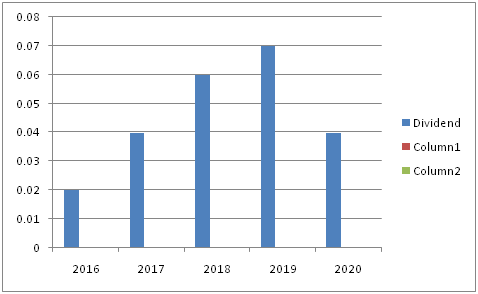
(Virgin Australia 2020)
Capital Structure
This is a major business decision which needs to be addressed by the management. The Capital is the lifeline of any business;a business can’t survive without capital. The business needs to forecast its capital needs well in advance to pursue its business objectives.
Example of an event in media that reflects the following financial management decisions are as follows:
Capital Structure
To raise external capital in the form of equity share capital, A listed company brings out an Initial price offer (IPO) of its share for the public sale. It is an excellent source of raising capital. It is also considered as a cheap source of raising capital. Osteopore (ASX: OSX) raised $5.25 million to fulfil its capital requirement. The company wants to expand its business in areas Like Asian region, US & EU regions. It also helped the company is increasing its share price by 265% ((IG 2020).
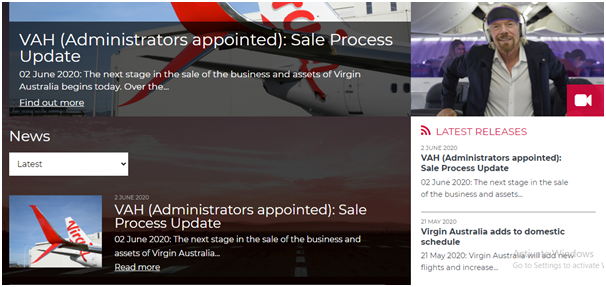
(IG 2020)
Working Capital management
This is that amount of capital with which day to day business activities are carried out like Purchase of Raw material, payment to creditors and Receipts from debtors. This management is also very important as over usage of working capital burdens the company whereas the shortage of working capital puts the organization under risk of business interruption.
Example of an event in media that reflects the following financial management decisions are as follows:
Working Capital management
Woolworths will extend its existing dairy contribution business by investing a further $5 million to help increase its efficiency. It will give strength to its milk business. It is estimated that this move to help more than 450 farmers supplying milk to the Woolworths. It also plans a levy of 10 cents to its products to help its suppliers as part of strengthening them. This will allow Woolworths to pay an extra $30 million to its co-producers (Woolworths 2020). The existing milk business will also get help from this move.
Part 2. Fact Finding of Australian financial market regulation
Part 2.1
The listing requirements and process are summarised in below-mentioned points:
1) The advantages of being a listed company on ASX include- opportunities to raise funds for company growth, availability of currency in form of diversified share capital base, the building of reputation of the company among the investors, attracting institutional investors due to increased transparency and credibility, improved valuation of the company, improved efficiency due to vast disclosures, improved liquidity of company shares, improved relation with employees due to option of issuing them company shares, customers’ reassurance is uplifted as the listed companies have to follow rigorous rules and regulations as per ASX (ASX 2020).
2) The problems that need to be considered before getting listed on ASX are- the company will have to invest a lot of time in managing the vast disclosures and corporate governance requirements, there is a vast media exposure and the company needs to be alert towards it, the market conditions can change frequently and the business should be susceptible to it, IPOs require additional funding and the company should be ready to raise capital, more the number of shares more will be the dilution of ownership and control & directors responsibilities get manifold to adhere to rigorous disclosure requirements and managing relations with investors (ASX 2020).
3) Requirements of listing on ASX are:
• There should be a minimum of 300 shareholders who are non-affiliated and each holding share valued at minimum $2000 each.
• Free float of 20% is required (ASX 2020).
• In case of a company is listed on foreign exchange and ASX then it should comply with all requirements of ASX Listing Rules.
• There are two tests applicable to the applying companies- profit test and assets test. To pass the profile test, no working capital is required. But, to pass the asset test, a minimum of A$1.5 million of working capital is required with other specific requirements mentioned in the ASX rules (ASX 2020).
4) The steps of the procedure of listing on ASX are as follows:
• The first step is to appoint advisers who are experienced in the same field and these advisers may be lead manager, investment banks, stockbrokers, lawyer, accountant or any similar skilled person or institution.
• The second step is doing preparatory work which includes prospectus drafting, preparing an application for listing and other requisite document preparation along with following a due diligence procedure. The prospectus should follow all the legal requirements as suggested in the Listing Rules (ASX 2020).
• The third step is the starting of institutional marketing. This can be done only after the lodging of the prospectus with ASIC (ASX 2020). The marketing is done to attract investors to the IPO, hence only limited marketing is allowed in this step.
• The fourth step is the lodging of the prospectus with ASIC under which ASIC allows seven days for exposure of draft prospectus for review and comments of the public. After seven days, the investors can make applications only if ASIC is satisfied with the prospectus (v).
• The fifth step involves lodging of the listing application with ASX once it gets approved by ASIC. ASX generally takes six weeks to process the application.
• In the sixth step, the offer is given to retail investors and the offer is generally for 3-5 weeks (ASX 2020)
• Final step closes the offer period and allocating of shares is done.
5) Calculation of listing fees is done based on the market cap of the company and calculated according to the value of securities. Listing fees are calculated at the initial level of listing on the value of securities. Suppose, the market cap is $55m, which means that the company has 100,000 securities with each security of $550, then initial listing fees will be $124,597 as per the listing calculator (ASX listing fee 2020)
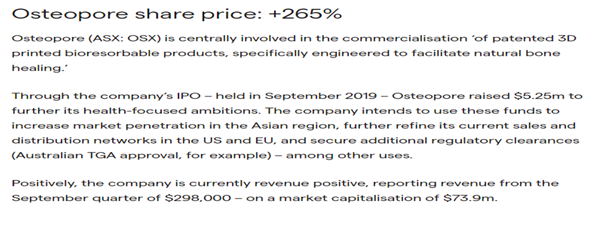
Part 2.2
Facts about the registration of Financial Advisory Service in Australia as per ASIC rules are:
1) Financial Advisers Register is a register managed by ASIC which consists of a public record of names and details of financial advisers who provide financial advice to customers about the financial products and services available for investment. The register mentions details about the financial adviser and also discloses whether he is an authorised financial adviser or not (ASIC 2020). Other details available are the qualifications, experience and their history of employment which ASIC also monitors from time to time.
2) On the financial register, only those financial advisors are there who are authorised to give financial advice and include those persons or institutions who have a license of Australian Financial Services(AFS) and they should be authorised to provide advice on the ‘relevant financial products’ to the customers.
Those advisers who do not fulfil the above requirements of being a financial adviser are not on the Financial Advisors register (ASIC 2020). It means those advisers who are giving either general advice or are not providing advice on the ‘relevant financial products’ like basic products of banking, etc.
The responsibility of updating the register lies on AFS License holders and not ASIC. There are penalties if they fail to update the register. AFS holders can authorise any other person to update the same on their behalf.
3) As mentioned earlier, the contents of Financial Advisers Register include details of Financial Advisers like name, qualification, work history and those financial products on which they can advise on.
4) ‘Relevant Financial Products’ include all the financial products except general products of insurance, basic products of banking, Consumer credit insurance and any of these products’ combination (ASIC 2020).
5) As per the professional standards applicable, following are the requirements to be followed by financial advisers:
• They should have a qualification which is approved by the standards.
• They should pass FASEA test.
• They should participate in CPD programme of 40 hours per year to upgrade their professional skills and knowledge (ASIC 2020).
• They should be compliant with the Code of Ethics namely ‘Financial Planners & Advisers Code of Ethics’.
• They should complete a 100 hours structured training session.
Part 3 Risk analysis
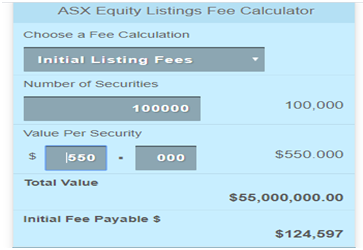
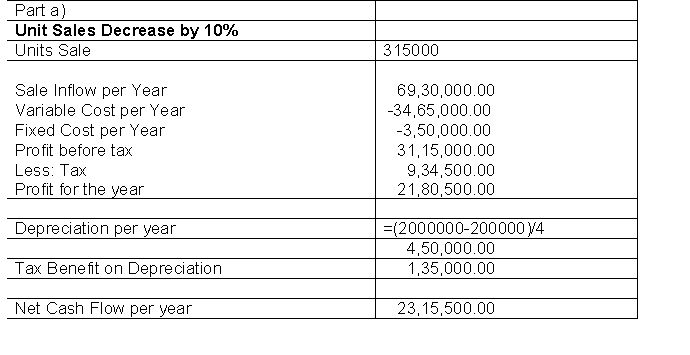
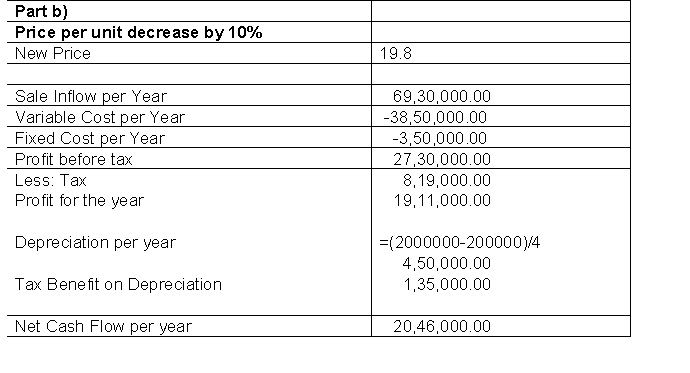
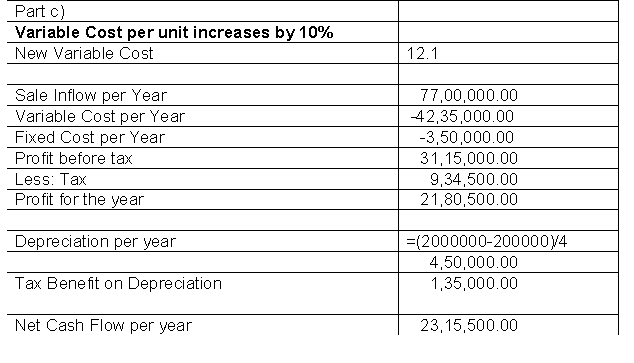
The investment in new projects involves various risk and uncertainties of various factors on which the result of the project depends. Thus before investing in any project various estimate of the cash inflows and outflows is done over the life of the project. The required rate from the project is used as discounting factor for bringing the cash flows to the present value. Since the cash flows are spread over the life of the project and due to time value of money the cash flows are required to be brought to present value for comparability of the total cash outflows and total cash inflows from the project. The net of cash inflow and outflow is called the net present value of the project. This is one of the most effective methods for project appraisal and determining the decision of investment in the project. If the net present value is positive than the project is able to give more return as required and should be accepted, on the other hand if the project has negative NPV than it means that the project is unable to get the desired results and further analysis is required.
In the given the initial outflow at the start of the project is given by investment in purchase of a machinery for $2000000 and also for working capital requirements of $600000. Apart from operational cash flows at the end of the project that is after 4 years the company will get the $200000 as residual value of the machinery and $600000 as return of the working capital initially invested. The expected sale price is $22 and estimated units to be sold are 350000. The cost associated with this will be $11 per unit variable cost and $350000. The tax rate is given as 30% which will also lead to outflow of cash. The machinery which is purchased also gets the depreciation benefit in the income statement. The depreciation does not lead to any actual outflow of cash thus it is excluded from calculation of the cash flow for the year, but since the tax benefit is received on the same that is due to depreciation the tax liability reduces and thus cash outflow decreases. Thus to take this into consideration the tax shield on depreciation is added to the annual cash flow.
In the given case the NPV is calculated positive thus the project is viable. The inputs in the project are liable to change as the future is uncertain. Thus a sensitive analysis is done by varying the inputs and taking the results after the change. By this method we will be able to analyse the percentage change in the present value with the percentage change in the inputs. In every case the PV of the project is positive and sensitivity shows positive value thereby the project will be selected
Conclusion
The above study was done to introspect into the topics of financial market and financial management. The study gave clear evidence that the financial market of Australia deals in various products and that the ASX is a primary player. The comparison of four different financial institutions provides a clear indication of the potential that the market contains. Moreover, the study indices that the benefit of the listing is manifold as it provide an edge and helps in making the script public. Further, the fact-finding of the financial adviser speaks volumes about ASIC. The end part of the study provides an analysis of the financial management technique whereby the project evaluation is done. The result indicates that the project should be considered when the PV of the project is positive.
References
ASIC 2020, Financial Advisers Register, viewed 3 June 2020, https://asic.gov.au/for-finance-professionals/afs-licensees/financial-advisers-register/
ASX 2020, A Guide to Listing & the IPO Process in Australia, viewed 3 June 2020 https://www.asx.com.au/documents/resources/A-Guide-to-Listing-SEP-18-Maddocks.pdf
ASX listing fee 2020, Listing fees, viewed 3 June 2020 https://www.asx.com.au/listings/listing-with-asx/listing-fees.htm Auswide bank 2020, About us, viewed 4 June 2020, https://www.auswidebank.com.au/
AUB Group Ltd 2020, finance assignmentAbout us, viewed 4 June 2020, https://www.aubgroup.com.au/site/content/ Macquarie 2020, About Company, viewed 4 June 2020https://www.macquarie.com/in/en/about/company.html
Acorn Capital Investment 2020, Acorn capital Investment details, viewed 4 June 2020 https://www.asx.com.au/asx/share-price-research/company/ACQ/details Acorn Capital 2020, About us, viewed 4 June 2020, https://www.acorncapital.com.au/
Virgin Australia 2020, VAH sales proceeds update, viewed 4 June 2020, https://newsroom.virginaustralia.com/release/vah-administrators-appointed-sale-process-update
IG 2020, Top 3 Australian IPOs from 2019, viewed 4 June 2020, https://www.ig.com/en/news-and-trade-ideas/top-3-australian-ipos-from-2019-191231
Woolworths 2020, Woolworths to extend dairy levy support for 12 months and introduce new $5m fund to help with on-farm efficiency, viewed 4 June 2020, https://www.woolworthsgroup.com.au/page/media/Press_Releases/woolworths-to-extend-dairy-levy-support-for-12-months-and-introduce-new-5m-fund-to-help-with-on-farm-efficiency/












